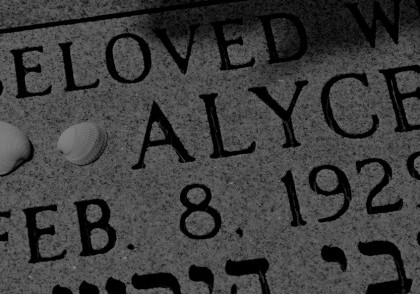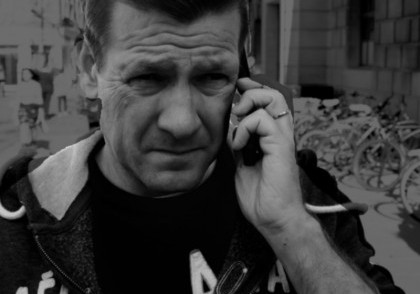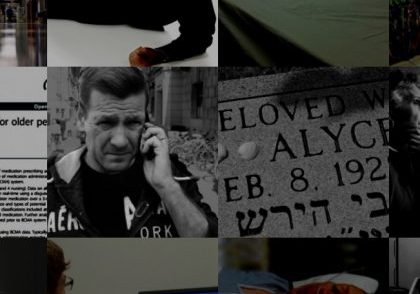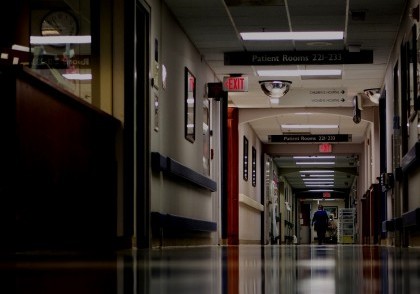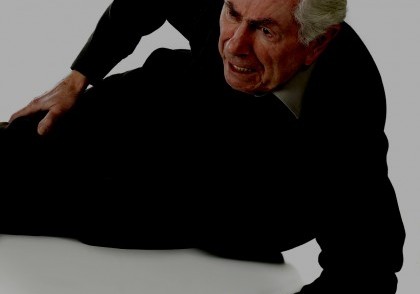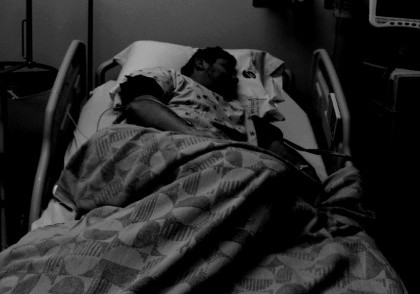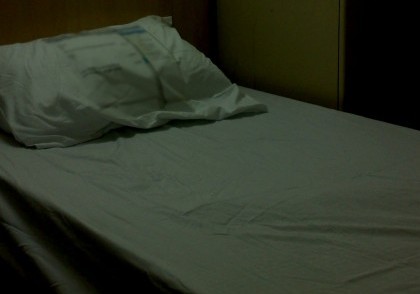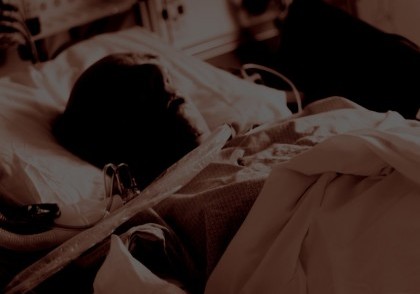If your loved one has been the victim of abuse at a nursing home you may be considering filing a lawsuit against those who are responsible for the harm that was done to your loved one. This page addresses some of the frequently asked questions our firm comes across in elder abuse cases.
What is elder abuse and neglect?
The CDC defines elder abuse as "[a]n intentional act or failure to act by a caregiver or another person in a relationship involving an expectation of trust that causes or creates a risk of harm to an older adult."
What types of elder abuse and neglect are there?
Elder abuse and neglect includes, but is not limited to: physical abuse, sexual abuse, psychological abuse, bedsores, falls, medication errors, and financial exploitation.
How prevalent is elder abuse?
The National Council on Aging estimates that about 1 in 10 elderly individuals are subject to abuse. The National Center on Elder Abuse similarly states that about 10% of the elderly population has been the victim of some form of elder abuse. Other estimates of abuse put the mark at as many as 5 million elderly people being abused each year. A majority of the time the person abusing an elder individual is a family member.
In general, elder abuse is severely underreported. The Pennsylvania Coalition Against Rape (PCAR) states that just one in four cases of elder abuse is reported. A study of elder abuse in New York stated that the "elder abuse incidence rate in New York State . . . was nearly 24 times greater than the number of cases referred to social service, law enforcement or legal authorities who have the capacity as well as the responsibility to assist older adult victim."This means that for every single case that was reported, the study estimated that another 24 were not.
What is physical abuse and what are the signs my loved one has been mistreated?
The CDC defines physical abuse as "[t]he intentional use of physical force that results in acute or chronic illness, bodily injury, physical pain, functional impairment, distress, or death." This type of abuse includes actions such as striking, hitting, or beating an elderly person. It also includes burning, pushing, shaking, scratching, kicking, pinching, hair pulling, using restraints inappropriately, physical punishments, and withholding medication or other inappropriate use of a medication.
The signs of physical abuse can include visible injuries like burn marks, bruises, abrasions, broken bones, fractured bones, or pressure marks. In addition to the physical markers of abuse, an elder who has been the victim of abuse may also exhibit behavioral signs such as "anger, fear, anxiety, nervousness or depression." In addition, he or she may become apathetic, avoid eye contact, or cringe away from physical contact. An elderly individual who has been the victim of physical abuse may also become withdrawn, startle easily and have difficulty sleeping. Another sign could be if the caretaker of the elderly person refuses to let him or her have visitors or not leave the elderly individual alone with any visitors that are permitted.
►Learn more about elder physical abuse.
What is sexual abuse and what are the signs my loved one has been subject to this type of abuse?
NCOA guidance states that sexual abuse can be defined as "touching, fondling, intercourse, or any other sexual activity with an older adult, when the older adult is unable to understand, unwilling to consent, threatened, or physically forced." Those who are at greater risk for abuse are those who are cognitively impaired, physically disabled, isolated, or those without a support system. In addition, women are more frequently the victims of sexual abuse.
There are a number of warning signs that an elderly individual has been subject to sexual abuse. These signs can include: pain, irritation, bruising, or bleeding in the genital region or anal region, bruising on the inner thighs, or underclothing that is bloody, stained, or has been torn. Other an elderly individual has been sexually abused is if he or she has a difficult time walking around or sitting, has contracted an STD or is exhibiting behavioral changes.
►Learn more about elder sexual abuse.
What should I do if I suspect my loved one is being abused?
If you suspect your loved one is being abused by someone it is important to take action and get them help. If your loved one is in immediate danger, call the police. If there is not an imminent threat then you can contact the state Adult Protective Services on behalf of your elderly loved one to report the suspected abuse.
►You may wish to visit the website for New York's Adult Protective Services.
Can my loved one file a lawsuit if he or she has been abused in a nursing home?
If your loved one has been the victim of abuse at a nursing home, then he or she can file a lawsuit in order to recover damages for the injuries that he or she has sustained. The specific legal claims that your loved one will bring against the abusive parties will depend on the facts and circumstances of the case. These claims could include, but are not limited to, negligence, negligent hiring, negligent supervision, assault, or battery.
In addition, in New York, nursing home residents have certain rights. The Department of Public Health lists these rights are:
You have the right to:
Dignity, respect and a comfortable living environment.
Quality of care and treatment without discrimination.
Freedom of choice to make your own, independent decisions.
The safeguard of your property and money.
Safeguards in admission transfer and discharge.
Privacy in communications.
Participate in organizations and activities of your choice.
An easy to use and responsive complaint procedure.
Exercise all of your rights without fear of reprisals..
If those rights are violated, the individual may bring a claim under the state's Public Health Law. This law states that "[a]ny residential health care facility that deprives any patient of said facility of any right or benefit, as hereinafter defined, shall be liable to said patient for injuries suffered as a result of said deprivation, except as hereinafter provided." N.Y. Pub. Heath Law § 2801-D (2015). Injuries, as defined under this statute include, but are not limited to, "physical harm to a patient; emotional harm to a patient; death of a patient; and financial loss to a patient." Id.
A claim under Section 2801-d can be brought along with other claims common law claims, such as negligence or medical malpractice.
Who can I bring a claim against?
The appropriate party or parties that an individual who has been abused can hold liable will depend on the case at hand. For example, if a nursing home resident was physically abused by a staff member, that resident could likely file an assault claim against that staff member. If the nursing home was aware of the staff members violent tendencies or failed to conduct a background check, it too could be held liable.
What kinds of damages can my loved one recover?
The types of damages that a plaintiff -- the person bringing the lawsuit -- can recover will vary from case to case. A plaintiff who successfully proves liability in a nursing home abuse case may be able to recover damages for:
- past medical bills
- future medical bills
- emotional distress
- pain and suffering
In addition to damages that are meant to compensate the plaintiff for his or her injuries, in certain cases punitive damages may be awarded. Punitive damages are meant to be punish a defendant for previous reprehensible behavior and to deter the defendant from doing anything similar in the future.
If a plaintiff brings a claim under Public Health Law, section 2801-d, the damages are a bit different. A plaintiff who proves that they were deprived of their rights can be awarded compensatory damages. Under this law the minimum amount of compensatory damages that can be awarded is at least 25 percent of the patient's daily costs at the facility "for each day that such injury exists." N.Y. Pub. Health Law § 2801-D (2015). In addition, punitive damages may be available in cases where "the deprivation of any such right or benefit is found to have been willful or in reckless disregard of the lawful rights of the patient." The law also permits a court of award attorney fees to the plaintiff.
What is the statute of limitations in a nursing home abuse case?
A statute of limitations is the maximum amount of time that a plaintiff has to bring his or her case against the person or entity that caused them harm. The statute of limitations will vary depending on the claim at issue and there can be exceptions that apply that can extend the statute. In general, in New York, a plaintiff has three years to file a claim for negligence and one year to file a claim for assault and battery. See, N.Y. C.P.L.R. § 214(5) and N.Y. C.P.L.R. § 215(3).
Contact A New York Nursing Home Abuse Attorney
If your loved one has been the victim of any type of abuse at the hands of the staff at a nursing home or as a result of the staff's negligence, please do not hesitate to contact the law firm of Dalli & Marino today. Our compassionate, experienced, and knowledgeable attorneys are dedicated to helping nursing home residents recover just compensation for the injuries they have sustained and the mistreatment they have had to endure. Call our office today for a free case evaluation at (888) 465-8790. You can also reach us by filing out our online contact form.
Case Study – [MC]
“But for that dosing error… Mom would still be with us.” DATELINE…
Case Study: Wrongful Death
Nursing Home Abuse: Case Study 19: Wrongful Death in a Nursing Home
Case Study: Nursing Home Abuse — From a Distance
You can’t be there every minute. But what of the warning signs for nursing home abuse?
Cases of Nursing Home Abuse
Review our portfolio of case studies covering numerous aspects of nursing home abuse: falls, bedsores, over-medication, neglect.
Case Study: Where is Everyone?
Nursing Home Abuse Case Study: Understaffing or neglect in a nursing home can cause severe loneliness, depression, loss of appetite or ignore health warning signs.
Case Study: Nursing Home Falls
Nursing Home Abuse: Despite best practices intended to reduce the incidence of falls, they remain a common cause for nursing home injuries.
Case Study: It Starts with Bruising
Nursing Home Abuse: Bedsores caused by neglect
Case Study: Nursing Home Bedsore
Nursing Home Abuse: Bedsores can lead to fatal complications, including organ failure and even cancer.
Case Study: I Never See A Doctor When I Request One
Nursing Home Abuse Case Study: Patients fail to receive prompt attention from nursing home physicians.
Case Study: Medication Error
Nursing Home Abuse Case Study: A medication error leads to dangerous health complications or death.
